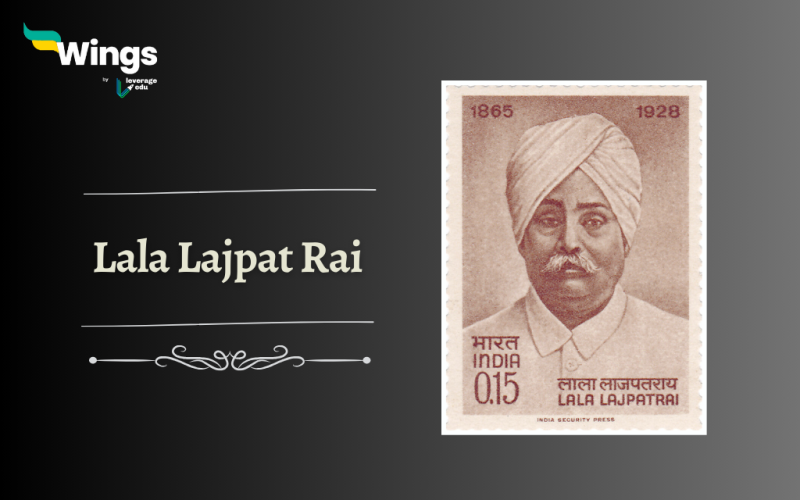Lala Lajpat Rai was popularly known as the ‘Punjab Kesari’ (Lion of Punjab). He was one of the prominent members of the Indian National Congress who could not live to see the Independence of India. Apart from being a freedom fighter, he was an activist, an author, and a politician. He was also a member of the famous trio Lal Bal Pal.
Table of Contents

Early Life
Born on the 28th of January of 1865, in the Ludhiana district of Punjab, Lala Lajpat Rai was the son of an Urdu and Persian government school teacher. His early schooling started in Rewari and his father and mother became his pillars of learning liberalism and religion. He met Lala Hans Raj and Pandit Guru Dutt while studying law at the government college of Lahore.
He was inspired by Swami Dayanand Saraswati and soon became a member of Arya Samaj. He started practising law in Hisar setting up the Hisar Bar Council and then the Hisar district branch of the Indian National Congress. When he moved to Lahore again, he started practising journalism and also helped Mahatma Hansraj in setting up the Dayanand Anglo Vedic School in Lahore.
Also Read: Sardar Vallabhbhai Patel – The Iron Man of India
Indian Independence Activist
In 1914 he discontinued the practice of Law altogether to contribute towards the independence of India. He travelled to the United Kingdom and then the United States for the same reason. Suspected of instigating the political unrest in Punjab, Lala Lajpat Rai was deported to Mandalay.
In the 1920 Calcutta Special Session, Lala Lajpat Rai was elected the president of the Indian National Congress. He was the one who established the Servants of the People Society in Lahore, an NGO that now branches all over India.
He also waged a war against the caste system, women’s status, and untouchability in India. He also made many contributions as a journalist, being the founder and contributor of quite a few journals like Young India himself.
He headed the Congress session that led to the non-cooperation movement and was elected to the Legislative Assembly after being released from prison in 1923. He also launched the non-violent campaign and slogan ‘Simon Go Back’ march in Lahore against the Simon Commission.
Also Read – Dr. Sarvepalli Radhakrishnan’s Biography and Education
Death
The British retaliated against this non-violent march with brutality. They ordered lathi charges against the protestors and Lala Lajpat Rai was severely injured in the violence. As he was succumbing to his wounds, his words inspired the youth,
“मेरे शरीर पर पड़ी एक-एक लाठी ब्रिटिश सरकार के ताबूत में एक-एक कील का काम करेगी”
Translated as: “The blows struck at me today will be the last nails in the coffin of British rule in India”
Rai took his last breath on the 17th of November 1928.

Also Read: Why Did the Indian Mutiny Happen?
Literary Works
Lala Lajpat Rai has produced his works in Hindi, Punjabi, English, and Urdu. He has contributed to various magazines and newspapers. Some of his famous works include:
- The Story of My Deportation in 1908.
- Arya Samaj in 1915.
- The United States of America: A Hindu’s Impression in 1916.
- The problem of National Education in India in 1920
- Unhappy India in 1928.
- England’s Debt to India in 1917.
- Autobiographical Writings of Mazzini, Garibaldi, Shivaji, and Shrikrishna.
Quiz
Results
#1. What was Lala Lajpat Rai popularly known as?
#2. Who was Lala Lajpat Rai by profession?
#3. Who found the Arya Gazzette?
That’s all about Lala Lajpat Rai! If you want to read more articles like this, you can get Study notes on the Modern History of India here. Also, you can visit our general knowledge page on Indian History!
 One app for all your study abroad needs
One app for all your study abroad needs
















